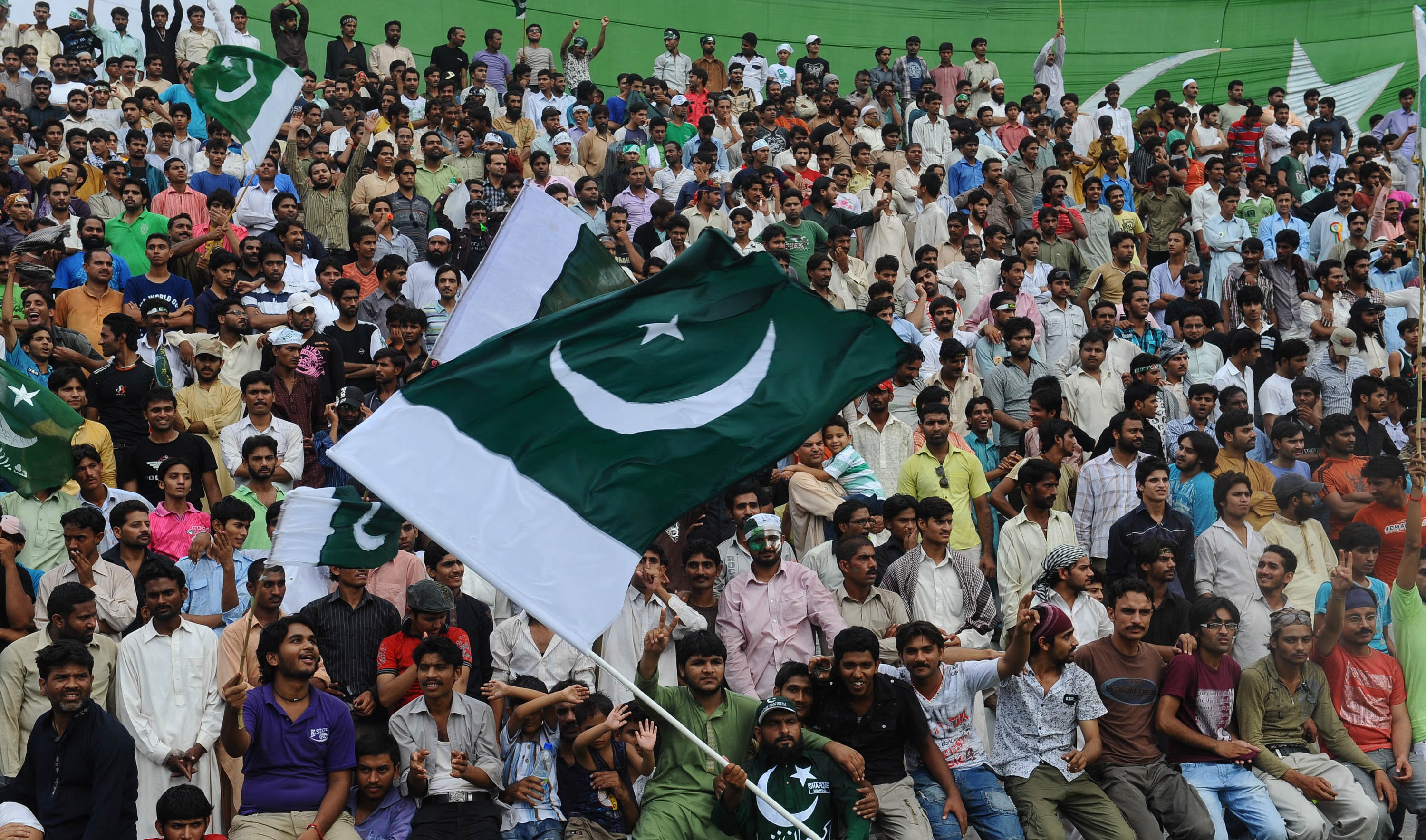
Pakistani people wave national flag at the flag hoisting ceremony from the Pakistani side of the Wagah border. AFP PHOTO/Arif ALI / AFP PHOTO / Arif Ali
Ayesha Khalid
South Asia is home to almost 30% of the entire world’s youth which, if developed, can alter the fate of the region. Usually, a country’s population development is manifested through its population and development indices which encapsulates quality education, health, household income and certain existing inequalities or vulnerabilities. However, in order to speculate the case of the South Asian youth population over the next 20 years, one must ask the question of how developed is the youth majority?
Statistics indicate that India has about 800 million young people who are at 0.287 on YUTT (Youth Unemployment in Total) Index which is low but not as lower as Afghanistan, Pakistan and Srilanka. In a recent report published by United Nations Development Programme Pakistan, Dr. Adil Najam and Dr. Faisal Bari estimate that more than half of Pakistan’s youth population i.e., around 54 million will reach up to 148 million in 2040. The potential of the youth in terms of skilled labor and engagement, whether in civic life or political, is one of the vital indicators to identify youth development. One of the main factors of low Youth Development Index (YDI) in the region is that youth does not have many outlets to exercise their skills. Pakistan’s youth unemployment rate is 10.8 percent between the ages of 15-24, which is still better than Afghanistan and Srilanka standing at 17 and 22 percent but worse than India and Nepal at 9 and 5 percent. Having a 17.4 million youth population, Afghanistan has the lowest YDI 0.440 in South Asia, next in line with Pakistan with a youth bulge of 54 million at 0.470.
With more than half of the youth population in South Asia’s vastly populated countries such as India, China, Pakistan, Bangladesh risks to security and well-being are imminent. Various studies indicate a relationship between youth bulge of a country and civil strife and security unrest it faces. Given the population growth rate, regional security will largely depend on the structure, size and age of the population it is inhabiting. The age between 15-29, which is considered as youth, is ideal for producing military men, officers, young entrepreneurs etc. On the contrary, if they are not provided with opportunities to participate as an active part of the society, they can be used for human trafficking and if brainwashed, can easily be influenced negatively by ideologically and religiously motivated organizations. Cincotta enunciates in his essay, Demographic Security Comes of Age that countries with large youth bulge are 2.5 times more prone to experience an outbreak of civil conflict than states with older population. For example, Afghanistan’s youth population has increased to 45 percent in the last three decades due to high fertility rate which has provided more fuel to the armed conflict in the region.
With respect to conflict and youth bulge, it is interesting to note that France before French Revolution and Iran just before the Iranian Revolution in 1979 witnessed a huge youth bulge. But this remains a great challenge for the developing countries.
Due to lack of education and job opportunities in developing countries, the same bulge can lead towards societal unrest by enabling discontent and crime if not channeled properly. However, demographic transition to democratic institutions and free markets can lower the risk of inter and intra state conflicts/violence. In the recent report by UNDP, most of the youth inhabiting the routes of the China-Pakistan Economic Corridor (CPEC) have reservations towards losing employment to non-local workers. However, these reservations are misplaced. From China’s perspective, they cannot afford to offer their human resource to Pakistan because China’s elderly people are growing at a rapid rate. Currently China has 17.3 percent of population that is 65 years and above. China has to rely on machinery that will lead towards high productivity and automation. This is how they are managing the demographic transition within a short period of time in comparison to other countries. Similarly, not being able to meet good standard of living and employment, the developing states across South Asia are facing the issue of brain drain.
The demographic dimensions of conflict, defined by Cincotta et.al, assess why the nations with higher young population are more vulnerable to civil conflict. The main factor involved as discussed is the political volatility among youthful population age structure that helps instigate revolutions, ethnic wars, terrorist attacks and state-sponsored violence within states. This, however, can be micromanaged if government acts to integrate with private sports clubs, libraries and makes vocational training compulsory in secondary and higher level of schooling, enhancing employable skills of students. Therefore, enabling social and political participation at school level to bring peace and stability in the region.The region is undergoing a demographic transition which can only jump to the next phase if indicators of Youth Development Index are well planned.
Youth has an advantage over other fellow citizens if their engagement towards social and political life is improved. They can make informed decisions and their skills can be harnessed by eliminating inequalities and forming a coherent youth policy. A policy that can allow public places for youth engagement, bridging the gender gap, allowing new businesses by young people and making jobs for an economic activity that involves them will be the one that will prove effective in managing Pakistan’s youth bulge and harnessing its energies towards positive development of the country.
What can strengthen this policy is national curriculum designed to provide high-quality citizenship education which can instill much needed critical and rational thinking in pupils and enhance their understanding about democracy, government and responsible citizenship.
Ayesha Khalid is a Research Associate at the Center for Security, Strategy and Policy Research at the University of Lahore.





